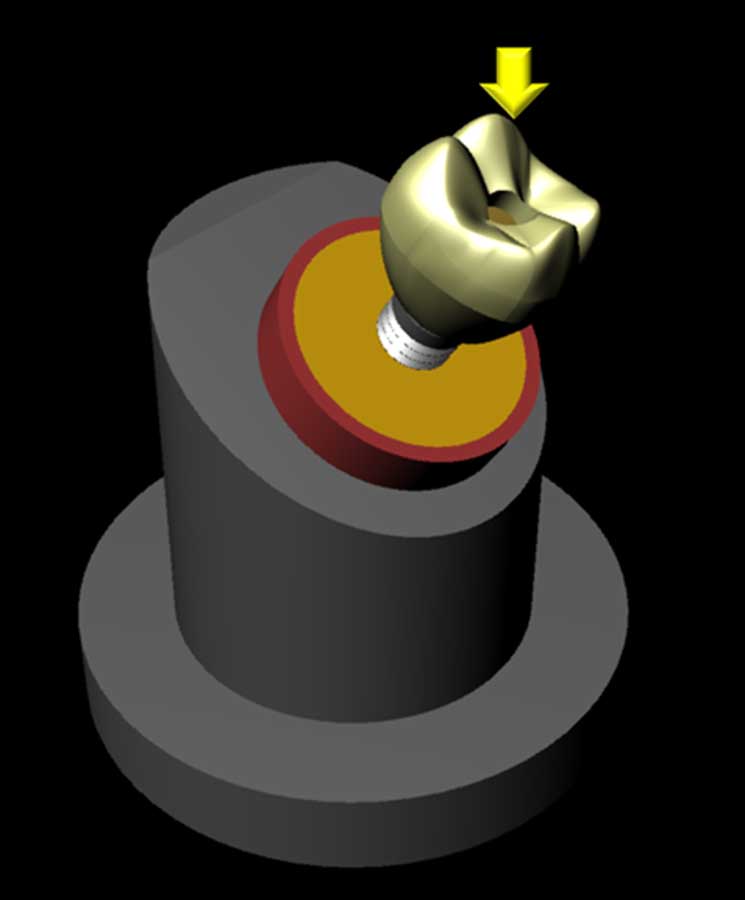Influence of implant connection on the stress distribution in restorations performed with hybrid abutments

All claims expressed in this article are solely those of the authors and do not necessarily represent those of their affiliated organizations, or those of the publisher, the editors and the reviewers. Any product that may be evaluated in this article or claim that may be made by its manufacturer is not guaranteed or endorsed by the publisher.
Aim This study evaluated the influence of prosthetic connection type (external hexagon [EH], internal hexagon [IH] and morse taper [MT]) on the stress distribution in an implant-supported prosthesis.
Materials and methods Using modeling software, three sets were formed according to the prosthetic connection composed of ceramic crown, mesostructure, abutment, abutment screw, implant, cement layers and bone tissue. Solids were imported to the analysis software and bone model was fixed in the base. All materials were considered isotropic, linearly elastic and homogeneous. The static load (500 N, 30°) was applied in the central fossa. Stress distribution data were obtained according to Von-Mises and microstrain criteria.
Results The type of prosthetic connection influenced the stress distribution. The stresses for the IH and MT connections were concentrated on the implant and abutment; for EH at the implant, abutment screw, at the implant platform, and at the cement layer between abutment and mesostructure. There is lower influence for the crown and mesostructure, with more promising results for the MT connection. For the bone tissue, all connections showed the same strain pattern. Stress peaks of 148, 142 and 138 MPa in the implant, 134, 129 and 62 MPa in the screw, and 86, 118 and 131 MPa were observed respectively for EH, IH and MT.
Conclusions The morse taper connection showed promising performance with lower stress concentration in the abutment screw, implant platform and cement layers.
Ethics Approval
Regarding the stress distribution, the hybrid abutment is more indicated for the morse taper implant.Supporting Agencies
The authors would like to thank São Paulo Research Foundation (FAPESP) with the grant nº 17/09104-4.The Journal of Osseointegration has chosen to apply the Creative Commons Attribution NonCommercial 4.0 International License (CC BY-NC 4.0) to all manuscripts to be published.


 https://doi.org/10.23805/JO.2019.11.03.08
https://doi.org/10.23805/JO.2019.11.03.08







